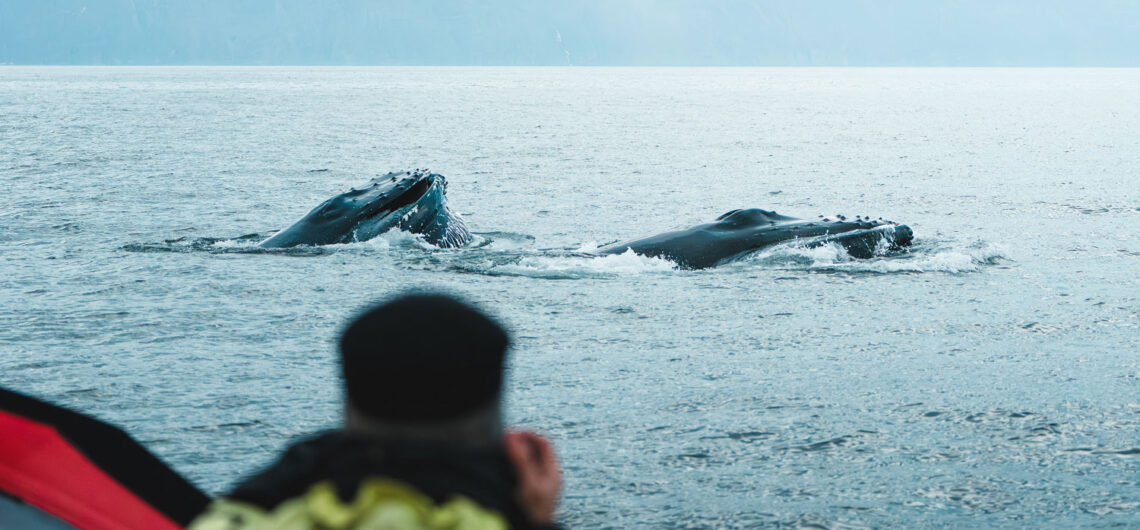In this post, we would like to describe a fascinating feeding technique of humpback whales that we are lucky to occasionally observe during our summer tours in Skjálfandi Bay out of Húsavík, Iceland.
The feeding of Humpback Whales
Often, the feeding of humpback whales is not visible to us on the boats since the krill and schooling fish that they consume can be found at great depths underwater. So, what we see is the majestic tail of the humpback being lifted, indicating that the whale is diving down. That leaves to our imagination that, for the next 5 to 10 minutes, they are most likely busy feeding underwater.
However, there is a foraging technique that is particularly special to observe since it occurs at the surface of the water and, among us guides, is one of our favourite behaviours of the humpback whale to watch: lunge feeding.
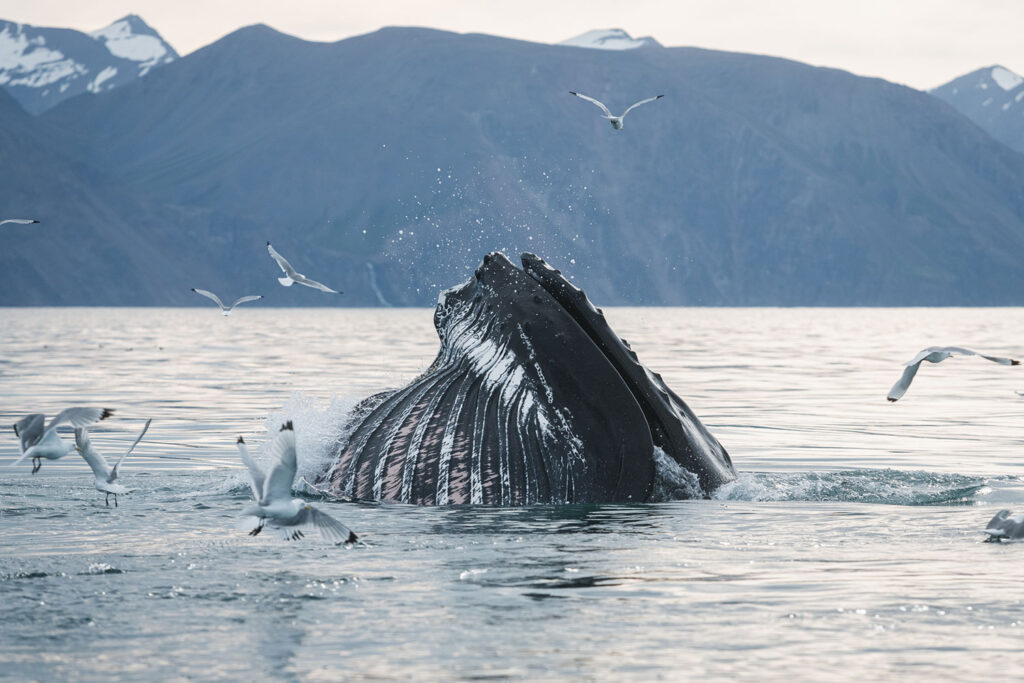
What is Lunge-Feeding?
Lunge feeding is a filter-feeding technique where the whale can be seen emerging with an open mouth beneath a ball of fish and krill, which gathers close to the surface.
When the whale rises upwards, hundreds of baleen plates contained in the gigantic mouth are visible, hanging vertically from the upper jaw and functioning as filters during the foraging. With these keratinous brush-like structures, the humpback whale can efficiently feed around 1 ton of fish and krill per day.
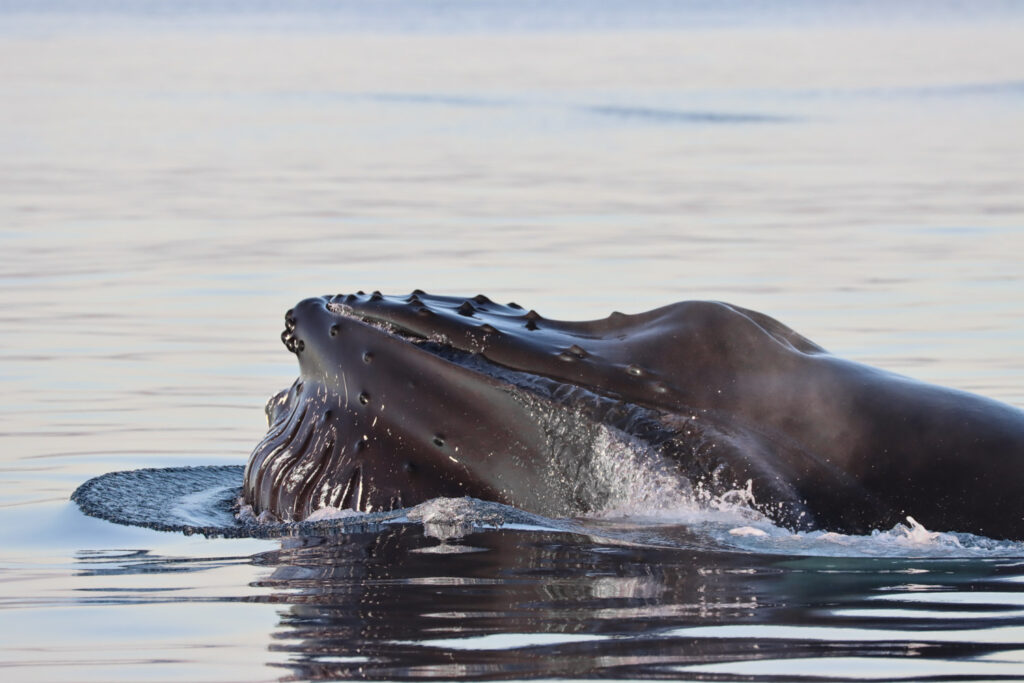
How do Humpback Whales use baleen plates to feed?
Just like other rorquals, humpback whales can expand their throat grooves, which allows them to take in large volumes of water. Seeing the mouth expand to the full extent is an impressive aspect of the lunge-feeding behaviour. After taking a big gulp of fish and krill, the humpback can close the mouth and press up the heavy tongue, which will force the water out and pass through the baleen plates. Only the fish and krill will remain stuck in the baleen plates.
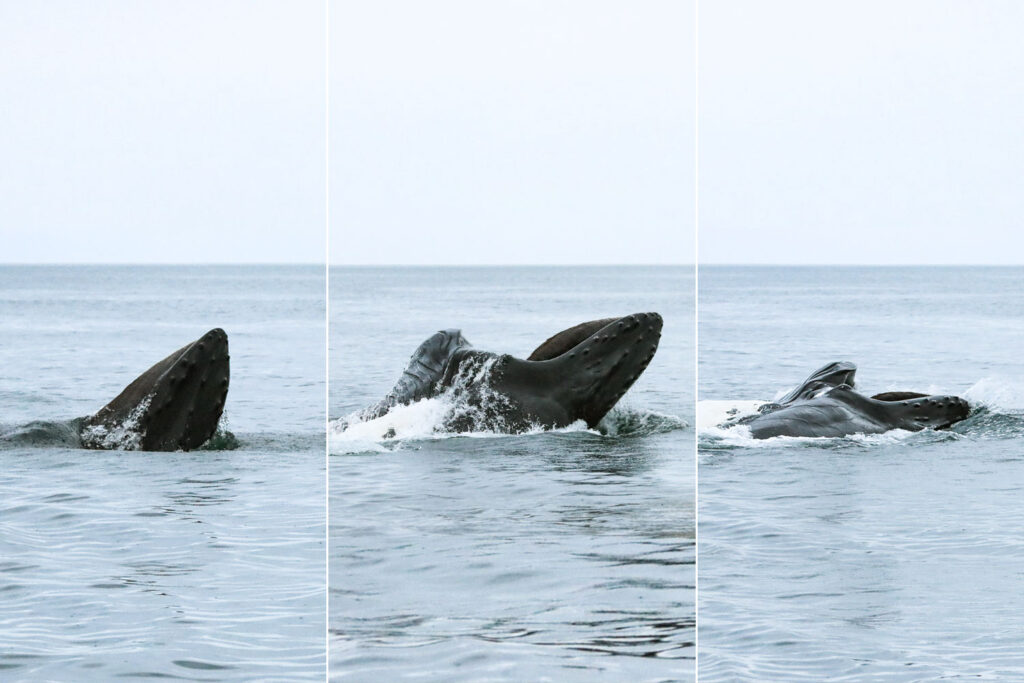
Why is Lunge-Feeding an unforgettable Whale Watching experience?
Even though the humpback whale will also filter-feed with the baleen plates underwater, the unique trait of lunge-feeding is that it happens at the surface of the water. Often, an abundance of seabirds can be seen circling around the feeding whale, making it appear like a glorious feast for everyone!
This behaviour, called lunge-feeding, is not only a highly efficient way of feeding, reflecting the intelligence of these animals, but it also showcases the astonishing size of these giants.
Being able to observe this perfectly coordinated way of foraging is surely breathtaking and reminds us of how lucky we are to witness these magnificent animals displaying their natural behaviour in their habitat.
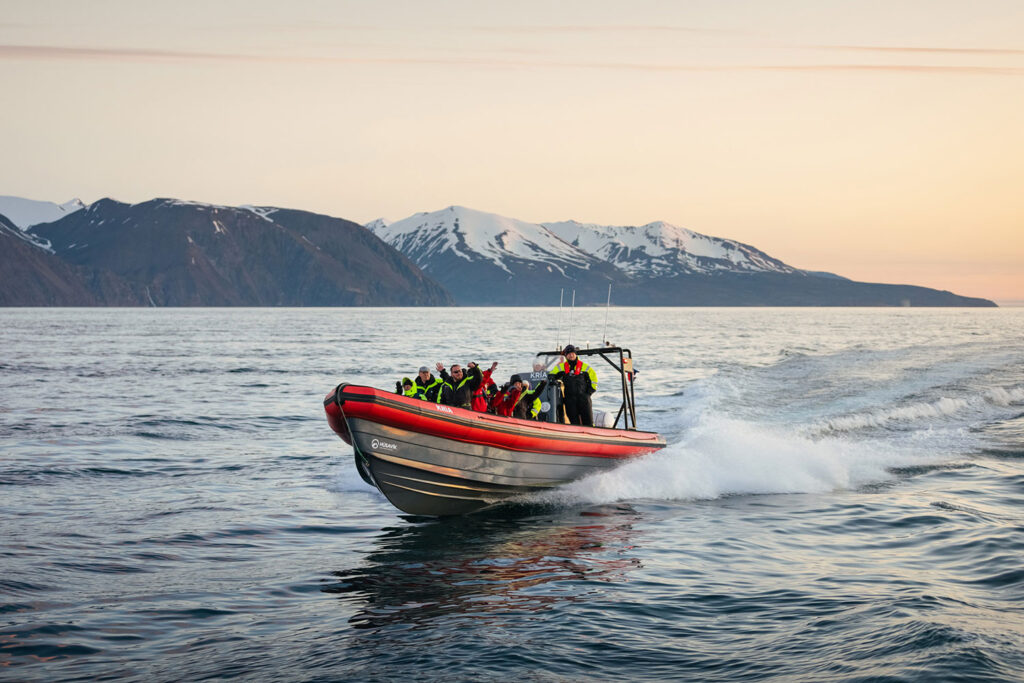
Join Húsavík Adventures for a real wildlife tour from Húsavík
To experience different whale behaviour firsthand, you can join one of our whale watching tours. Departing from the whale capital of Iceland, Húsavík, our tours offer you a front-row seat with a chance to observe humpback whales and other whale species in their natural habitat. With experienced guides, you’ll have the chance to witness lunge-feeding, breaching, and other stunning behaviours.
Book your tour today and embark on an unforgettable journey into the majestic world of whales!

